Disclosure: This article contains affiliate links. We may earn a commission from purchases at no extra cost to you, which helps our travel content.
I've always believed that the soul of a destination lives in its marketplaces—those bustling hubs where commerce, culture, and community converge like players in a perfectly balanced RPG party. When I found myself with a rare weekend off from catering gigs and a surprisingly affordable flight deal to Suriname, I jumped at the chance to explore Lelydorp, the country's second-largest town often overshadowed by Paramaribo. What I discovered was a cultural leveling-up experience that my fellow budget travelers and culture-seekers need to know about. Between spotting Yellow-headed Caracaras circling above the markets (score one for my birding life list!) and haggling for handcrafted treasures that didn't decimate my wallet, Lelydorp revealed itself as Suriname's hidden artisan haven—where Dutch colonial influence meets indigenous Maroon traditions and East Indian aesthetics in a fascinating cultural fusion.
Navigating Lelydorp's Main Market: A Cultural Crossroads
Lelydorp's central market hit me with sensory overload that rivaled my first GenCon experience—colorful produce stalls, spice vendors calling out their wares, and the rhythmic sounds of craftspeople at work. Located just off the main road through town, this market operates daily but truly comes alive on weekends when artisans from surrounding villages bring their finest work.
What makes Lelydorp's market special is how it showcases Suriname's cultural diversity in microcosm. Javanese batik techniques blend with indigenous Amerindian patterns. Maroon woodcarvings sit alongside Hindustani-inspired textiles. It's like watching different gaming genres collaborate on a single masterpiece.
I spent my first morning simply observing the dance of commerce—vendors arranging displays with practiced precision, locals negotiating with familiar banter, and the occasional tourist (like myself) trying to absorb it all. The market layout feels organic rather than planned, with specialized sections emerging naturally: produce and food items clustered near the entrance, textiles and clothing in the center, and handicrafts toward the back.
Don't rush through. I found that slowing down and engaging with vendors revealed stories behind their crafts that no guidebook could provide. When I expressed genuine interest in a wooden bird carving (a Scarlet Ibis that caught my birder's eye), the craftsman spent fifteen minutes explaining how he selects different woods for different bird species based on color and grain patterns.

💡 Pro Tips
- Visit early (7-9am) for the freshest selection and more relaxed interactions with vendors
- Bring small denominations of Surinamese dollars—vendors often can't break large bills
- Learn basic greetings in Dutch or Sranan Tongo to break the ice with vendors
Maroon Woodcarving Workshops: Where Tradition Meets Artistry
If you've ever watched master gamers execute perfect speedruns, you'll appreciate the skill of Lelydorp's Maroon woodcarvers. These artisans, descendants of escaped enslaved people who developed independent communities in Suriname's interior, create intricate pieces that tell stories of resistance, spirituality, and cultural pride.
I discovered several workshops on the eastern edge of town where you can watch carvers transform raw wood into everything from practical items like combs and bowls to elaborate figurines and decorative panels. The distinctive geometric patterns—called tembe—incorporate symbolic motifs that have been passed down through generations.
The highlight of my visit was meeting Master Carver Anton, whose workshop doubles as an informal museum of Maroon woodcraft. For a small fee (about 25 SRD/$1.25 USD), he demonstrated traditional carving techniques using tools that haven't changed much in centuries. What struck me was how he worked without sketches or measurements—every cut guided by inherited knowledge and decades of practice.
While the larger, more elaborate pieces can be investment purchases, many artisans offer smaller items perfect for travelers on a budget. I picked up a beautifully carved wooden bird whistle for about 100 SRD ($5 USD) that now has a special place in my birding kit. For documentation, I relied on my weatherproof notebook to record the symbolic meanings of different patterns—essential in the humid Surinamese climate where regular paper quickly deteriorates.
Many workshops accept commissions if you have something specific in mind, though this requires advance planning or a longer stay. What makes these pieces special isn't just their beauty but knowing they're created using techniques that have survived centuries of cultural oppression.
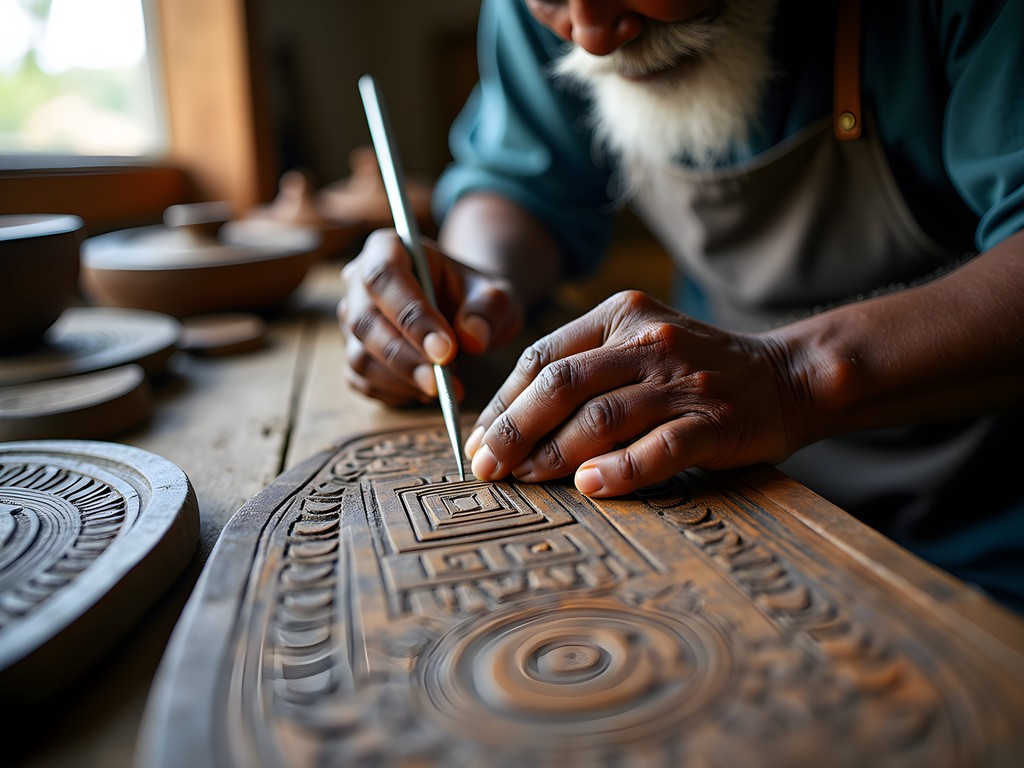
💡 Pro Tips
- Ask permission before photographing artisans or their work—some patterns have spiritual significance
- Plan to pay in cash as most workshops don't accept cards
- Consider weight and size restrictions for your return flight when purchasing larger pieces
Textile Treasures: From Pangi Cloth to Contemporary Designs
As someone who's spent countless hours coordinating color schemes for catering presentations, Lelydorp's textile scene hit my aesthetic sweet spot. The town serves as an important center for both traditional and contemporary textile arts in Suriname.
The most iconic textile you'll encounter is pangi cloth—vibrant cotton fabrics with distinctive patterns traditionally worn by Maroon women. Each pattern has specific cultural significance, similar to how different gaming guilds might have their identifying symbols. The Mama Sranan Workshop on the south side of town offers demonstrations of traditional dyeing techniques using local plants and clay. What impressed me was how these artisans have maintained chemical-free processes that are both environmentally sustainable and historically authentic.
Beyond traditional textiles, a new generation of Surinamese designers is creating contemporary pieces that blend cultural motifs with modern aesthetics. The collective workshop at Cultural Center Lelydorp showcases young artists who transform traditional patterns into clothing, accessories, and home goods with global appeal. I found beautiful table runners starting around 150 SRD ($7.50 USD) that make perfect gifts—lightweight, meaningful, and showcasing Surinamese creativity.
Don't miss the opportunity to try your hand at traditional techniques. Several workshops offer mini-classes where you can create your own simple pangi cloth piece. I spent a fascinating afternoon learning basic stamping methods, guided by a patient instructor who explained how different symbols represent elements of Surinamese history and natural environment. For documenting these intricate patterns and color combinations, my pocket camera proved invaluable with its excellent color reproduction—crucial for capturing the vibrant hues that make these textiles so distinctive.
While mass-produced "souvenir" textiles are available in tourist shops, investing a little more for authentic, artisan-made pieces directly supports the continuation of these cultural traditions.

💡 Pro Tips
- Look for the 'Made in Suriname' tag to ensure authenticity
- Schedule textile workshops at least a day in advance as they often require preparation
- Dark blue and indigo patterns typically use natural dyes and are considered particularly valuable
Indigenous Crafts: Connecting with Amerindian Traditions
While Maroon and Creole influences dominate Lelydorp's craft scene, the town also serves as an important marketplace for indigenous Amerindian artisans from Suriname's interior. These crafts offer a tangible connection to the country's original inhabitants and their sustainable relationship with the rainforest environment.
The monthly Indigenous Craft Market (held the first Saturday of each month near the town hall) brings artisans from Carib, Arawak, and Wayana communities to sell directly to customers. If your visit doesn't coincide with this event, several shops along Indira Gandhiweg stock authentic indigenous items year-round.
What fascinated this bird enthusiast was how many indigenous crafts incorporate avian themes—from intricately woven cotton hammocks decorated with macaw motifs to pottery featuring the distinctive patterns of forest bird plumage. The craftsmanship reflects an intimate knowledge of Suriname's biodiversity that resonates with my own appreciation for natural environments.
Most distinctive are the warimbo or cassava squeezers—tubular woven baskets that stretch to extract liquid from cassava, a staple food. These functional art pieces showcase extraordinary mathematical precision in their weaving patterns. The craftsmanship reminded me of the most complex game design—intricate systems working in perfect harmony.
For travelers concerned about authenticity and ethical sourcing, I recommend visiting Rainforest Crafts Cooperative, where items come with information about their makers and communities of origin. The cooperative ensures fair compensation reaches indigenous artisans rather than middlemen.
During my exploration, I used my travel daypack which proved perfect for carefully carrying smaller purchases while keeping my hands free for photography and note-taking. The multiple compartments kept fragile items separated and protected throughout the day.
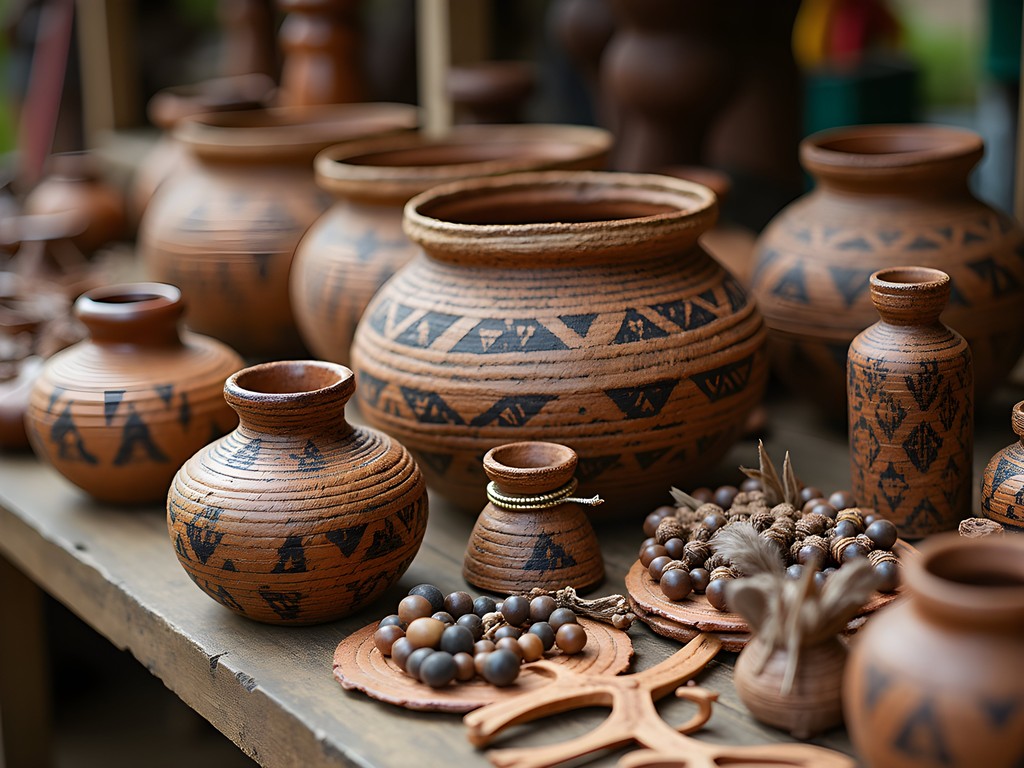
💡 Pro Tips
- Indigenous crafts using natural materials may require special care in humid environments
- Ask about the significance of patterns and motifs—many tell specific cultural stories
- Consider purchasing a certificate of authenticity for more expensive items
Haggling with Heart: Price Negotiation & Cultural Etiquette
If you're like me—raised in a fixed-price retail environment—the art of haggling can feel as intimidating as facing a final boss without saving your progress. Yet in Lelydorp's markets, price negotiation is both expected and, when done respectfully, part of the cultural experience.
First, understand that haggling isn't about "winning" by securing the lowest possible price. It's a social interaction that, when done well, should leave both parties satisfied. My catering background taught me the importance of value recognition—acknowledging the time, skill, and materials that go into creating something special.
Begin by establishing rapport. I always take time to admire the craftsmanship, ask questions about techniques, and show genuine interest before discussing price. This approach consistently leads to more pleasant interactions and often better prices than aggressive bargaining tactics.
In Lelydorp, I found that prices typically have about 20-30% flexibility—not the dramatic 50-70% markdown you might experience in some global tourist markets. A reasonable counter-offer might be 70-80% of the initial asking price, eventually settling around 15-20% less than the original quote.
Cultural sensitivity matters tremendously. Never suggest an item is overpriced by comparing it to mass-produced souvenirs. Instead, frame your negotiation in terms of your budget: "I love this piece, but I'm traveling on a limited budget. Could you help me with the price?"
Some contexts aren't appropriate for haggling. Fixed-price shops (increasingly common for higher-end crafts) have established fair pricing that supports artisans. Similarly, food items and everyday goods typically have standard prices.
Perhaps most importantly, if you negotiate a lower price, commit to the purchase. Walking away after a vendor agrees to your offer is considered extremely disrespectful. I've seen fellow travelers damage relationships that local artisans have with all foreign visitors through thoughtless negotiation tactics.
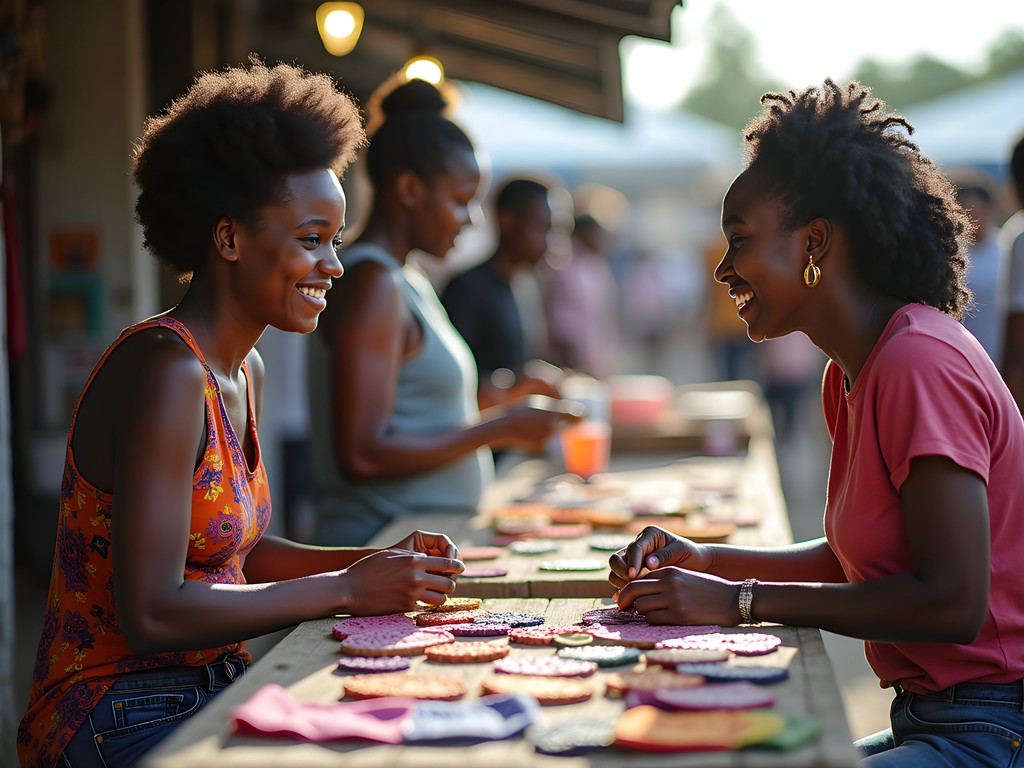
💡 Pro Tips
- Learn numbers in Dutch or Sranan Tongo—vendors appreciate the effort and it often leads to better prices
- Bundle multiple items for better value rather than aggressively negotiating on a single piece
- Bring a calculator or use your phone to ensure clarity on final prices during negotiations
Beyond Shopping: Cultural Workshops & Craft Demonstrations
What elevated my Lelydorp experience from simple shopping to genuine cultural immersion were the workshops and demonstrations available throughout town. For travelers seeking deeper connections with local traditions, these hands-on opportunities are the equivalent of unlocking achievement bonuses in your cultural exploration.
The Lelydorp Cultural Center offers scheduled workshops in everything from basic wood carving to textile printing. Most sessions last 2-3 hours and cost between 100-250 SRD ($5-12 USD)—exceptional value for personalized instruction. I participated in a beginner's session on creating traditional Maroon symbols and left with both a small carved pendant and a much deeper appreciation for the mathematical precision these artisans develop through years of practice.
For those with limited time, many craft shops offer shorter demonstrations throughout the day. At Maroon Treasures on the main street, craftspeople regularly demonstrate techniques like pangi cloth stamping or calabash decorating. These free demonstrations assume you'll make a purchase (which I happily did), but there's no explicit obligation.
What surprised me was how these experiences connected to my bird-watching interests. During a natural dye workshop, I learned how specific local bird species helped artisans identify plants with coloring properties—indigenous knowledge systems that integrate environmental observation with artistic practice.
To fully appreciate these experiences, I recommend bringing a travel journal to record techniques and cultural insights. Unlike digital notes, a physical journal allows you to include small material samples and quick sketches that become treasured memories of your experience.
Most workshops welcome photography, but always ask permission first, especially when documenting specific techniques that may have cultural significance or represent proprietary knowledge for the artisan. I found that offering to share digital photos with craftspeople (many have WhatsApp) created goodwill and deeper connections.

💡 Pro Tips
- Book workshops at least 24 hours in advance as many have limited capacity
- Wear clothes you don't mind getting dirty if participating in dyeing workshops
- Bring a small gift from your home country for your instructor—this cultural exchange is highly appreciated
Final Thoughts
As I packed my carefully wrapped treasures—a carved Scarlet Ibis that captured both my birding passion and Suriname's artistic heritage, textiles that tell stories through their patterns, and the skills learned in workshops—I reflected on how Lelydorp offered something increasingly rare in our globalized world: authentic cultural exchange through commerce. Beyond the tangible souvenirs, I left with a deeper appreciation for Suriname's remarkable cultural resilience and creativity. In these markets and workshops, traditions aren't preserved as museum pieces but as living practices that continue to evolve while honoring their roots. For the budget-conscious traveler seeking meaningful connections, Lelydorp delivers extraordinary cultural richness without the price tag of more touristed destinations. So next time you're plotting a South American adventure, consider skipping the crowded markets of better-known destinations and instead dive into this vibrant hub of Surinamese craftsmanship—where every purchase supports cultural continuity and every interaction offers a window into traditions centuries in the making.
✨ Key Takeaways
- Lelydorp offers authentic access to diverse Surinamese crafts at prices significantly lower than in Paramaribo
- Participating in workshops provides deeper cultural understanding beyond simply purchasing souvenirs
- Building relationships with artisans through respectful interaction enhances both your experience and supports local traditions
📋 Practical Information
Best Time to Visit
year-round, with Saturday mornings offering the fullest market experience
Budget Estimate
$30-75 per day including accommodations, food and moderate shopping
Recommended Duration
2-3 days
Difficulty Level
Intermediate (Some Dutch Or Sranan Tongo Helpful But Not Required)

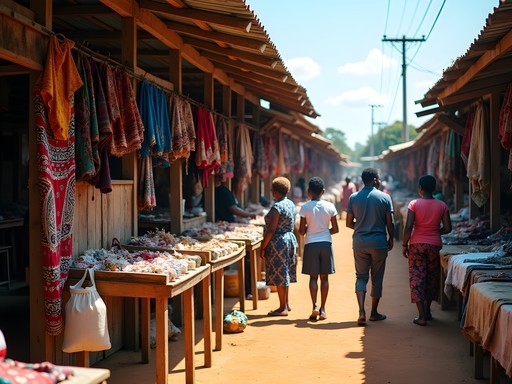
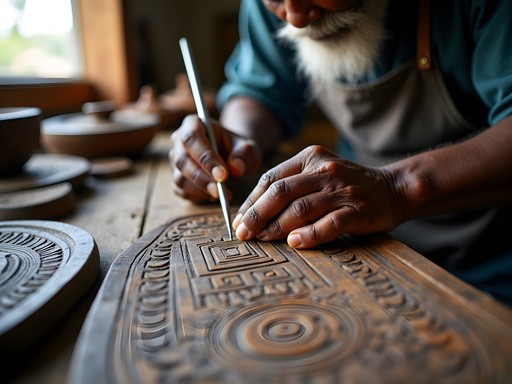







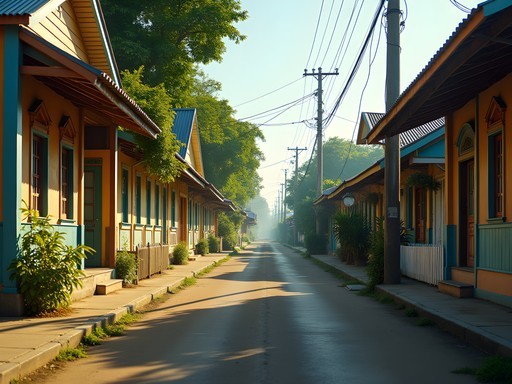
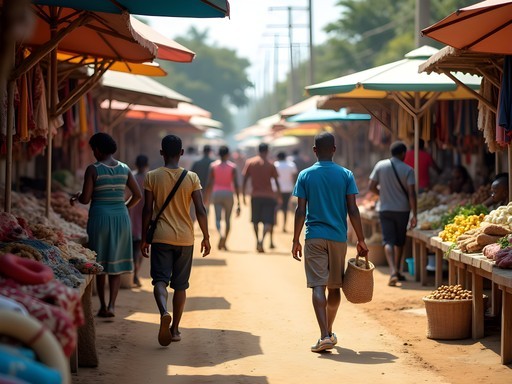

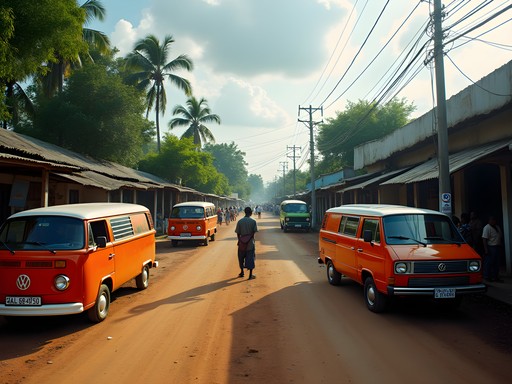

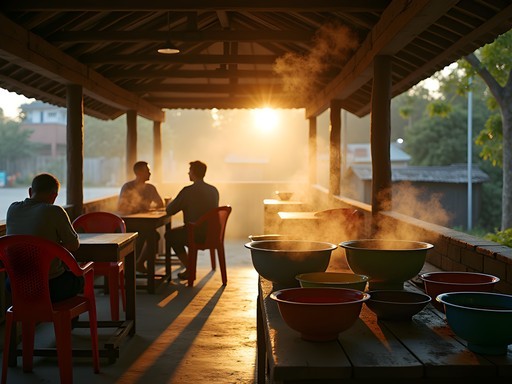

Comments
beachstar
Going to Suriname in May! How did you get to Lelydorp from Paramaribo? Is it easy with public transport?
Hunter Thompson
Not Raymond but I can help! Mini-buses run regularly between Paramaribo and Lelydorp - super cheap and takes about 30 mins. Just go to the central bus station in Paramaribo and look for the Lelydorp signs. Make sure you have some small bills for the fare!
beachstar
Perfect, thanks! Any issues with language barriers?
Hunter Thompson
Most vendors in the markets know basic English, especially those who deal with tourists regularly. I found that learning a few phrases in Dutch helps break the ice! I used phrasebook which had some Surinamese specifics too.
Hunter Thompson
Mate, this guide is absolutely BRILLIANT! I hit Lelydorp last month and your tips were spot on. Those Maroon woodcarving workshops were the highlight of my Suriname trip - ended up spending half a day with this older craftsman who showed me how they select different woods for different carvings. Bought a turtle that's now my favorite souvenir from South America. One thing to add - there's a small cafe near the main market that serves the most amazing peanut soup on Wednesdays. Family-run place with plastic chairs but INCREDIBLE food. Worth checking out if anyone's heading there! Did you make it to the monthly craft fair? I heard about it but my timing was off.
Raymond Berry
Thanks Hunter! I missed that cafe - definitely adding it to my list for next time. And no, I just missed the monthly craft fair too. Heard it's amazing though!
backpackperson4401
Those carved birds look amazing! Did you haggle for them or just pay the asking price?
Raymond Berry
Thanks! I did negotiate a bit, but more as a cultural exchange than to save money. The artisans appreciate when you show interest in their craft before discussing price.
backpackperson4401
Good to know! Heading to Suriname next year and definitely want to pick up some woodcarvings.
wanderingcamera
How easy is it to get to Lelydorp from Paramaribo? Is it worth a day trip or should I stay overnight?
Douglas Bradley
It's super easy - only about 30 minutes by minibus from Paramaribo. Definitely doable as a day trip. The buses run frequently from Saramacca Street. Just tell the driver you're going to Lelydorp and they'll drop you right near the market area.
wanderingcamera
Perfect, thanks! Day trip it is then.
Jean Wells
Raymond, your assessment of Lelydorp's markets is spot-on. Having visited numerous artisanal markets across South America, I find the authenticity here particularly noteworthy. The intersection of Maroon, Javanese, and Indigenous craftsmanship creates a unique cultural tapestry that's increasingly rare in our homogenized world. I would add that visitors should allocate sufficient time (minimum 3 hours) to properly explore the woodcarving workshops, as the artisans often invite you to observe their process when not rushed. I documented several techniques in my recent field notes that demonstrate remarkable continuity with 18th-century traditions. One practical tip: bring small USD bills as backup, though most vendors now accept card payments through mobile systems.
Raymond Berry
Thanks Jean! Great point about the time allocation - rushing through really diminishes the experience. I found my pocket translator invaluable for deeper conversations with the artisans about their techniques.
sunsetlover
Going in November! Is bargaining expected or considered rude?
Jean Wells
Gentle bargaining is acceptable at the main market, but I wouldn't bargain at the workshops where you're dealing directly with the artisans. Their prices reflect fair compensation for skilled work.
tropictraveler55
Those market photos are incredible! Adding Lelydorp to my bucket list!
Douglas Bradley
Excellent guide, Raymond! I visited Lelydorp's markets last year and was blown away by the cultural fusion. One tip I'd add: visit on Wednesday mornings when more indigenous vendors come in from surrounding villages. The Maroon woodcarvers you mentioned are incredible - I spent hours watching one artisan transform a simple block into an intricate turtle. For anyone planning a visit, I'd recommend bringing smaller bills (SRD) as many vendors don't have change, and a good market tote since plastic bags aren't common. Also worth noting that bargaining is expected but should be respectful - these are artisans proud of their craft, not mass producers.
Raymond Berry
Great addition about Wednesdays, Douglas! I completely missed that timing aspect. And yes, the cash situation is important to note - there's only one ATM in town and it's often out of smaller bills. Did you pick up any textiles while you were there?
Douglas Bradley
I did! Couldn't resist a beautiful pangi cloth that now hangs in my living room. I documented the whole textile-making process in my own blog. The way they create those geometric patterns is fascinating - all handwork, no machines. I used my travel journal to sketch some of the designs for reference. Still one of my favorite souvenirs from Suriname.
journeyexplorer
Those Maroon woodcarvings look amazing! Did you have any issues bringing them back through customs? I'm heading to Suriname in November and definitely want to pick some up.
Raymond Berry
No issues at all with customs! Just make sure you get a receipt from the artisan or shop. The carved items are perfectly legal to bring back as long as they're not made from protected species. The Scarlet Ibis carving I mentioned was pine wood with non-toxic paint.
journeyexplorer
Thanks for the quick response! That's super helpful. Can't wait to check out those workshops you mentioned.
Megan Martin
Raymond, your detailed breakdown of Lelydorp's craft scene is exactly what I needed before my business trip to Suriname next quarter. I always try to incorporate cultural experiences between meetings, and the woodcarving workshops seem perfect for a half-day excursion. For anyone combining business and exploration like me, I found the markets are actually open later on Thursdays (until 7pm) which is perfect after a day of meetings. Also worth noting that many artisans can create custom pieces if you're looking for corporate gifts with local significance - just plan to place orders early in your trip so they're ready before you leave.
roamwalker
That carved Scarlet Ibis sounds beautiful! Great find.
Raymond Berry
It's become my favorite souvenir from Suriname! The level of detail is incredible - you can even see the texture of the feathers.
Venture X
Premium card with 2X miles, $300 travel credit, Priority Pass